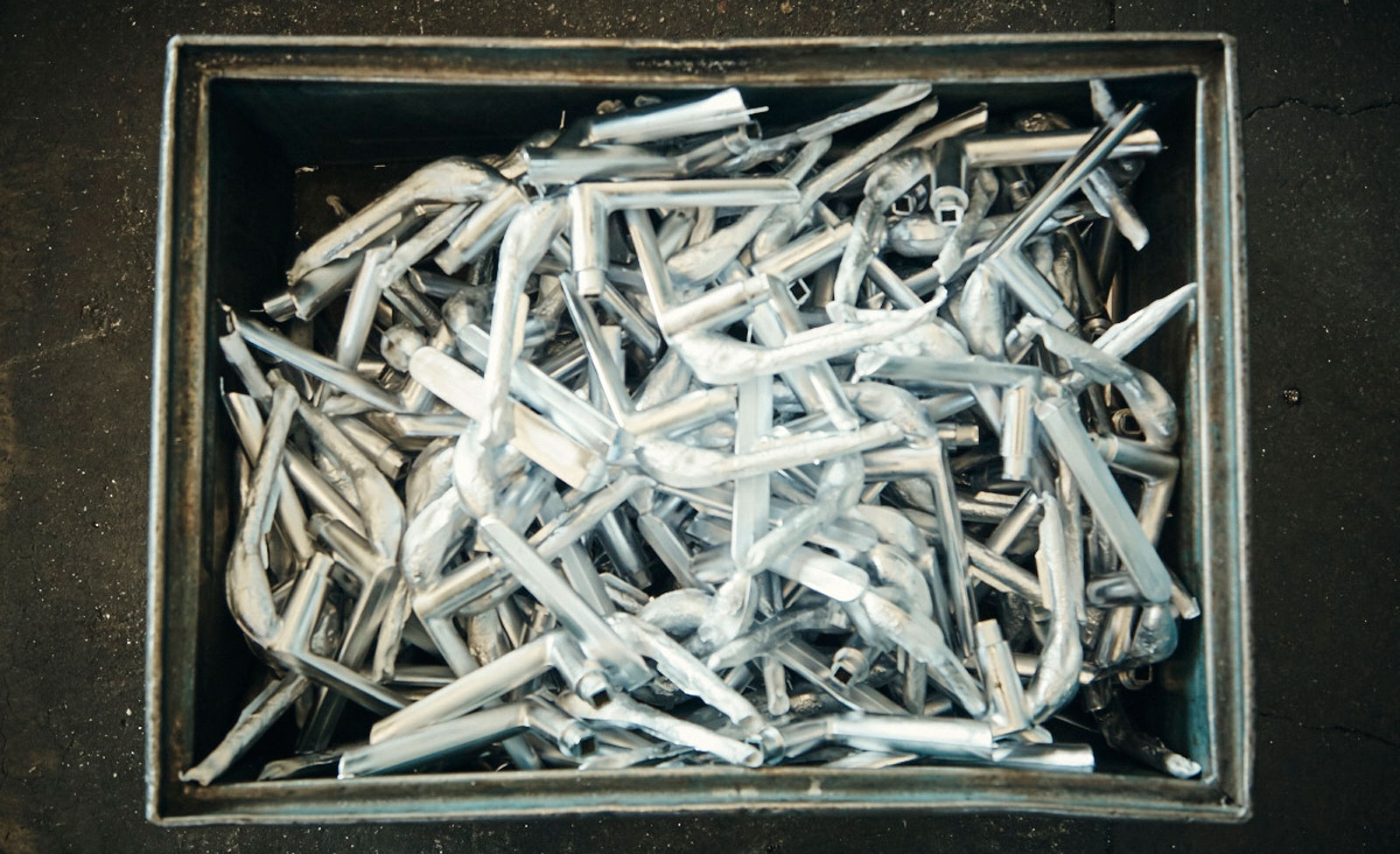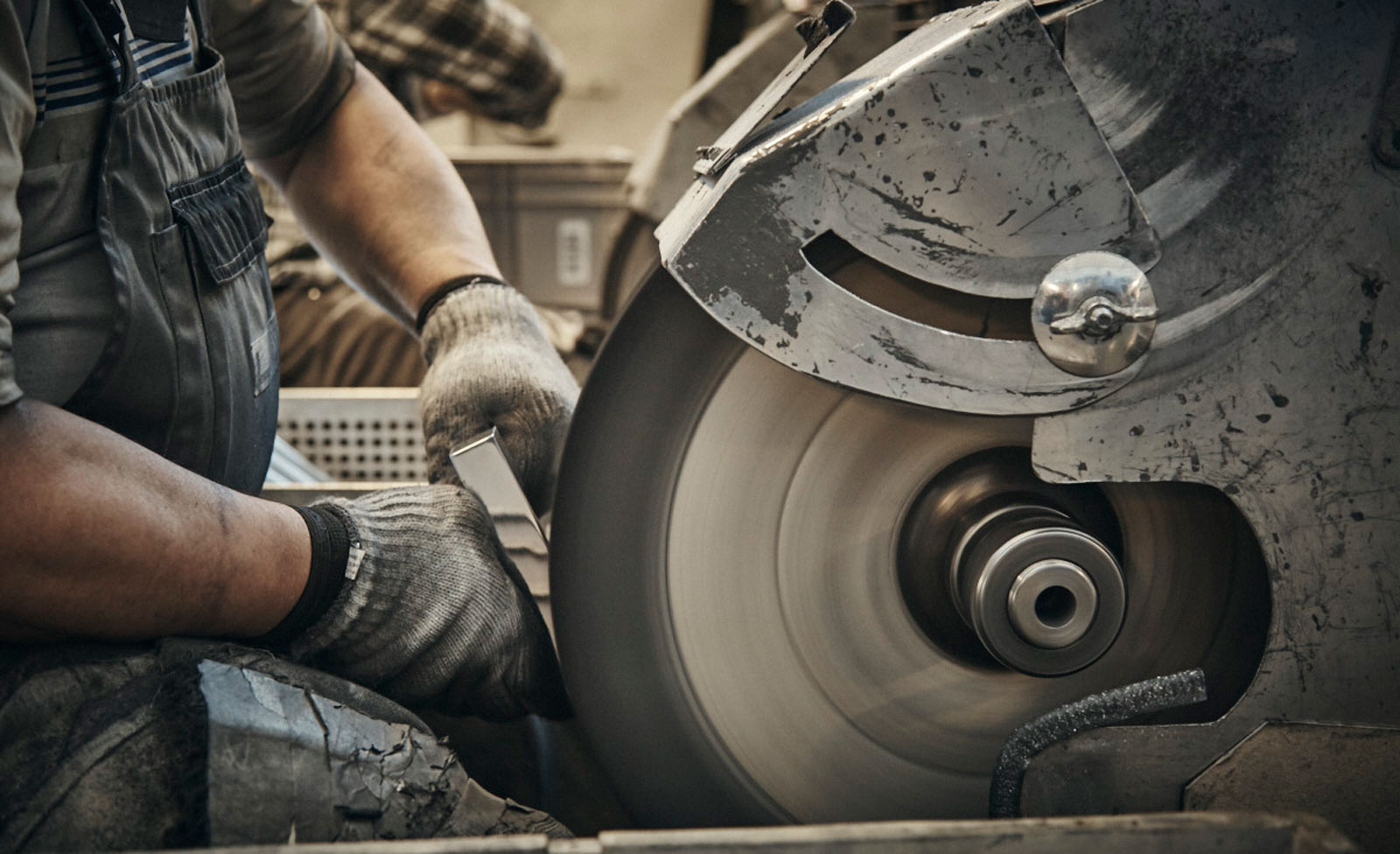On a factory visit in Brakel
Everything is under control
Good architecture doesn't just need a big design. It is also the sum of perfect details. We give little thought to many of them in day-to-day use. How about the doorknob. There is hardly a component that we pick up that often. If you want to know more about it, you should go to Brakel in East Westphalia. The concentrated expertise of the republic is gathered in the tranquil small town.
Over a million door handles leave the works of medium-sized company Franz Schneider Brakel, or FSB for short, every year. The company is the European market leader in the upscale segment.
That was not foreseeable in 1881 when the company was founded as Teutonia Werke, Westfälisches Metallwerk.
At first, decorative aluminum sheets were produced for the sweeping furniture of the Wilhelminian era. It was not until the twenties that door fittings came into being. Under the influence of New Building, they quickly became part of the architectural avant-garde. The architects of the Bauhaus and their contemporaries were more aware of the importance of functional door handles than anyone before.
FSB's big breakthrough came with the construction boom of the 1950s. It was then that the first models emerged that could be called author's handles. “The previously mostly anonymous design of the door handles was now attributed to individual designers such as our in-house designer Johannes Potente and was soon recognized worldwide,” reports FSB Marketing Manager Matthias Fuchs, a tall glasses wearer who himself studied industrial design. Four von Potentes designs later even ended up in the permanent collection of the New York Museum of Modern Art.
The material of the hour was aluminum, an astonishingly versatile light metal and a gleaming silver promise for the future, from which straight lines and curves could be formed. But then the enthusiasm for plastic and brightly colored FSB of the seventies plunged into crisis, until the brand gained a foothold again with new designs by leading designers in the eighties and increasingly relied on exquisite material aesthetics with stainless steel and bronze.
While other manufacturers are now producing in China, where stainless steel products have long since become mass-produced goods, FSB remains loyal to its East Westphalian homeland.
The promise of quality in the high-wage country has its price. The cheapest aluminum door handle set from Brakel costs 60 euros, the most expensive made of bronze is not available for less than 300 euros, stainless steel ranks between these two poles. This is another reason why you will not find FSB products in hardware stores. The designs come from well-known architects such as David Chipperfield, Helmut Jahn, Dominique Perrault or Christoph Mäckler and the classics among them from Walter Gropius, Robert Mallet-Stevens, Ferdinand Kramer and Max Bill.
Many production steps are necessary before you can hold one of the masterful door handles in your hands. In the bright halls of a former steam slaughterhouse, one of the 600 employees scoops molten aluminum with a ladle from a kettle, leans over the casting mold and pours the light metal into it with a hand that has been trained a thousand times over. Seconds later, a silver door handle comes loose from the tool. The blank is still burr and rough, then it is sanded several times, especially with the free forms still by hand and in a crouching position, with the geometrical forms a triadic ballet of robots with their awkward, jagged movements also helps.
In the trovalizing drums, an army of small ceramic cones then tirelessly rubs the metal and finally turns it into a flatterer after long hours. Only after mirror polishing is anodizing, which uses an electrochemical process to coat the aluminum with a thin but hard protective layer. In this way, the surface is colored and compacted until the handle is finally light- and weather-resistant. Despite all the effort, aluminum remains comparatively sensitive to scratches. However, since many customers demand a permanently flawless surface, FSB now manufactures the majority of door handles from stainless steel.
Here, too, man and machine work hand in hand again. It is surprisingly quiet in the bright factory halls when meter-long steel pipes are cut, blown up under tremendous pressure, deformed in various ways, then welded, deburred, ground and polished. Incidentally, door plates and rosettes punched out every second from an eccentric press as high as a house tumble like coins from a one-armed bandit. A worker immediately checks the shiny silver parts, precision is paramount.
Even if the FSB product catalog is as thick as the Berlin telephone directory, a large part of the production is made up of just a dozen successful models. “The absolute favorite of our customers is the so-called 'Frankfurt model', a simple handle that consists of two round bars that are welded to the miter,” explains Matthias Fuchs and finds “FSB 1076” in large quantities on racks on our tour.
The remarkably simple, successful design goes back to the architect Robert Mallet-Stevens and thus to the first half of the 20th century, and yet it is completely timeless.
The same can be said of the “four commandments of gripping” that the designer Otl Aicher gave the FSB developers back in the 1980s as criteria for handle design: thumb brake, index finger groove, ball of the foot and grip volume, all of which draw one successful design. Like the latest from John Pawson, the master of British minimalism.
The “FSB 1242” model is based on the famous Reichsform lever handle by Hans Poelzig from the 1920s, but is given a new interpretation in noble bronze. Details like this make up a house and give it character. Opinions may differ at the doorknob. It is always a statement by which ambitious builders can be recognized, whether in aluminum, stainless steel or bronze.
This article first appeared in the magazine "Häuser", issue 3/2016














